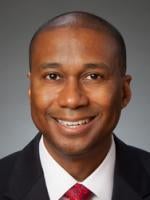Over the past few months, the IRS has released guidance that may prove helpful for employers planning for open enrollment and Form W-2 reporting. In particular, we discuss how implementing certain SECURE 2.0 and CARES Act plan design features have implications for Form W-2 reporting. In addition, we describe an expanded student loan opportunity and a flexible 401(k) design feature recently approved by the IRS.
Form W-2 Reporting of De Minimis Financial Incentives for 401(k) Plan Participation
Underlying SECURE 2.0 is the policy goal to improve the retirement readiness of the workforce. Consistent with this goal, SECURE 2.0 permits employers to offer “de minimis” financial incentives to encourage plan participation. While SECURE 2.0 does not define de minimis, the Senate summary mentions “low-dollar” gift cards as an example. The IRS has set the limit at $250. Regardless of the amount, employers must treat the value of gift cards as employee taxable income, subject to regular tax withholding unless there’s a specific exemption.
Tip: Employers should ensure that payroll administrators are aware of any financial incentives that have been provided to plan participants and properly code in the payroll system as taxable income.
Form W-2 Reporting – Employer Contributions as Roth Contributions
Before SECURE 2.0, employers could only make employer-matching contributions to their 401(k) plans on a pre-tax basis – i.e., Roth matching contributions weren’t permitted. Participants were limited to converting pre-tax employer matching contributions into Roth contributions via an in-plan Roth conversion (if permitted by the plan), and paying tax on the amount converted and any accumulated earnings.
Under SECURE 2.0, employers may offer 401(k) plan participants the option of receiving employer matching contributions or profit-sharing/nonelective contributions on a Roth basis. These contributions are not subject to withholding for federal income tax. In addition, these contributions generally are not subject to withholding for Social Security or Medicare tax.
Tip: Employers should include designated Roth contributions (made in lieu of elective deferrals) in boxes 1, 3, and 5 for Form W-2. They should report them in box 12 using code AA (for a section 401(k) plan). Employers should report Roth matching contributions or designated Roth nonelective contributions in boxes 1 and 2a of Form 1099-R for the year in which the contributions are allocated to the individual’s account, using code G in box 7.
Form 1099-R Reporting – Penalty-Free Withdrawals
SECURE 2.0 creates several penalty-free withdrawal provisions, which may avoid the 10% early withdrawal tax and be repaid to the plan within three years of receipt. Such withdrawals are, however, includible in the participant’s taxable income.
- Domestic abuse. Starting this year, participants who take withdrawals up to the lesser of $10,000 (indexed for inflation) or 50% of their vested balance may avoid the 10% tax if they certify they have been the victim of domestic abuse by a spouse or domestic partner within the prior year.
- Emergency events. Also starting this year, participants who take withdrawals up to $1,000 (or smaller amounts that leave at least $1,000 of vested benefits in the account afterwards) may avoid the 10% tax if they certify the amount is for a personal (or family) emergency. IRS Notice 2024-55 defines “emergency personal expense” as an unforeseeable or immediate financial need such as expenses relating to:
- Medical care
- Accident or loss of property due to casualty
- Imminent foreclosure or eviction from a primary residence
- The need to pay for burial or funeral expenses
- Auto repairs, or
- Any other necessary emergency personal expenses.
Tip: Employer should report these events on Form 1099-R, box 7, code 1
Educational Assistance Programs – Student Loan Relief for Employees
Recently, the IRS released a Tax Tip reminding employers about the expansion of Code Section 127 educational assistance programs.[1] Under the CARES Act, Congress permitted employers to provide “educational assistance” to an employee, by reimbursing employees for qualified education loan payments the employee has made or directly paying the lender. Such payments cannot be for the employee’s child’s or spouse’s student loans. Qualified education loan payments include payments on principal or interest in loans incurred by the employee to pay for “qualified higher education expenses” at an “eligible educational institution,” each as defined in Code Section 221(d).
This option is available only for payments made from March 27, 2020, through December 31, 2025. As a result, employees can exclude the first $5,250 of such payments from the employee’s gross income.
Tip: Review the plan document. Yes, there must be a plan written document (the IRS provides a model form). There is no requirement that educational assistance programs cover student loan payments. However, depending upon how the program document has been drafted, student loans may already be considered as an eligible expense. Employers should review their educational assistance programs – in particular, the definition of “educational assistance expenses” (or similar terms). If the term means “educational assistance as defined in Section 127 of the Code”, then the program can likely be interpreted as including student loans. If the term provides a list, then it is unlikely that student loans are covered. The point is to ensure that the employer’s intent is reflected in the program document.
IRS Approves Expanded Plan Design
In August, the IRS issued a private letter ruling that permitted an expansive employee-favorable plan design. In Private Letter Ruling 202434006 (the “PLR”), an employer requested IRS approval of a plan amendment that would allow employees to choose where they wished to direct certain discretionary non-elective employer (but not matching) contributions.
Under the proposed plan amendment, the employee must have completed one year of service. To be eligible to receive the contribution for the plan year, the employee must be employed on the last day of the plan year (with exceptions for death, disability, or retirement after a certain age). The employer would fund the contributions on March 14 of the year following the year to which it relates. Employees could not direct the investment of the amounts, which would be subject to a 6-year graded vesting schedule.
Employees could direct their contributions to:
- 401(k) plan account as a non-matching contribution
- Health savings account (HSA) up to statutory limits ($4,300 for individuals and $8,550 for families in 2025)
- Retiree health reimbursement arrangement (HRA)
- Student loan reimbursements through a Section 127 educational assistance plan (up to an annual limit of $5,250)
Employees could not receive the contributions as cash.
The IRS approved the employer’s proposed plan design – a treat for the employer and employees. The IRS ruled:
- The arrangement complies with Code Section 401(k) and is not considered a pre-tax contribution subject to elective deferral limits ($23,500 for 2025).
- The arrangement does not affect the treatment of contributions to and payments made from the retiree HRA and reimbursement amounts remain excludable from the individual’s gross income.
- The employee’s allocation of the contributions to the HSA remains excludable from the employee’s gross income.
- The arrangement does not affect the treatment of payments under the education assistance program as amounts are excludable from an employee’s gross income, up to the $5,250 limit.
Considerations. First, the disclaimer: This PLR (like all private letter rulings) can only be relied on by the employer that requested it. Second, employers should consult with their recordkeepers to ensure compliant plan administration, including nondiscrimination testing implications and employee communications. For example, to avoid adverse tax consequences (relating to constructive receipt issues), employers should game plan when employees should make their elections. Although the PLR did not directly address elections, it would be prudent to require the elections to be irrevocable and made during open enrollment.
[1] Other eligible expenses may include books, equipment, supplies, tuition and other fees.





 />i
/>i

